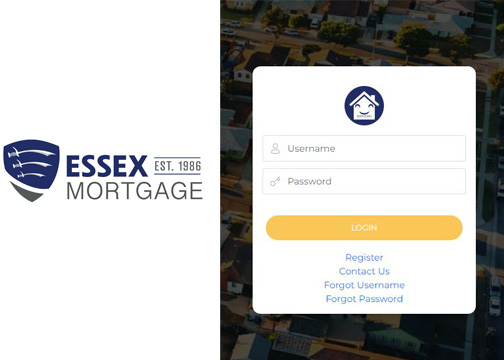Even while working in the medical field can be financially rewarding, becoming a doctor can require expensive schooling. There are numerous medical school loan forgiveness programs available for doctors to help reduce or even completely erase their debt. This is if they have a significant amount of debt. An average of $206,924 in student loans is taken out by most medical school applicants to cover their educational costs.

Medical school forgiveness programs for doctors remove all or part of a physician’s outstanding debt. This approach is to draw students to medical school. With loan forgiveness, these initiatives can also encourage students to work in a particular area. Medical school loan forgiveness programs for doctors may offer much-needed financial relief if you’re having trouble repaying your student loan debt. This is by making it more manageable.
Best Medical School Loan Forgiveness Programs for Doctors
Medical school loan forgiveness programs for doctors forgive all or part of your medical school loan debt once you satisfy specific requirements. There may be programs for doctors that are offered by your state government, the federal government, or other organizations that forgive medical school loans.
Generally, doctors in high-demand medical areas, nonprofits, or the government are eligible for student loan forgiveness. The following student loan forgiveness programs listed below are options for doctors who want to lower their debt from medical school.
Armed Forces Loan Repayment Programs
The Armed Forces Loan Repayment Programs offer eligible loans, either federal or private. Its maximum forgiveness amount of $40,000 per year, up to $250,000. Additionally, physicians in the U.S. military may be eligible for partial loan forgiveness from the Air Force Reserve, Army, Navy, and National Guard branches.
For a maximum of six years, each program will reimburse up to $40,000 in qualified student loans for each year of service. The maximum lifetime debt payback benefits are $250,000. This is if you serve an extra year and are eligible for an additional $10,000. To be eligible, you must be commissioned as an officer and sign a written commitment to serve on active duty.
Public Service Loan Forgiveness
Public Service Loan Forgiveness (PSLF) is a federal student loan repayment option available to many full-time employees of eligible government or nonprofit organizations. Internships or residencies in accredited nonprofit or public hospitals are frequently included in this. The Public Service Loan Forgiveness (PSLF) program allows eligible federal loans to be forgiven up to 100% of the remaining balance.
To be eligible for the Public Service Loan Forgiveness program, physicians and nurses must have the appropriate kinds of school loans. Although you can combine Perkins or Federal Family Education Loan (FFEL) Program loans to take part in the program, only federal Direct Loans are eligible.
Health Resources & Services Administration (HRSA) Pediatric Specialty Loan Repayment Program
The HRSA Pediatric Specialty Loan Repayment Program offers eligible federal or private loans with a maximum forgiveness amount of $100,000 over three years. It may be able to forgive up to $100,000 of your debt if you work as a pediatrician, surgeon, or child and adolescent psychiatrist.
National Health Service Corps (NHSC) Loan Repayment Program
Among other support programs, the Health Resources and Services Administration provides qualified healthcare professionals with a student loan repayment program. You must hold a license and be employed in a field that is acceptable to be eligible for forgiveness. You must commit to working for at least two years at a location that has been approved by NHSC. If you apply for and are accepted into the loan repayment program.
These places, which are frequently in underprivileged populations, are suffering from a scarcity of medical experts. By fulfilling this pledge, qualified student debt of up to $50,000 could be forgiven tax-free. Your third, fourth, and fifth years of service may earn you an additional $25,000 per year. This is if you are awarded a continuation contract. You may be eligible for some forgiveness through the program even if you are only able to work part-time.
Indian Health Service (IHS) Loan Repayment Program
The Indian Health Service (IHS) offers a Loan Repayment Program, which allows eligible loans from both federal and private sources. It has a maximum forgiveness amount of $25,000 per year. Physicians who meet the requirements can receive up to $25,000 per year to repay their college loans under the IHS Loan Repayment Program.
As a condition of employment, physicians must agree to work full-time for a minimum of two years in an eligible hospital, clinic, or medical facility run by IHS. IHS is a tribal organization, or an urban Indian program that serves American Indian and Alaska Native populations. After the first two years of service, participants can continue serving and can receive up to $25,000 for each year they continue.
How Can I Get Loan Forgiveness for Medical School?
It can be challenging to be eligible for student loan forgiveness programs for medical school. Take the following actions to increase your chances of being eligible for either complete or partial loan forgiveness:
Find out what loans you have
While some programs cater only to one loan type, others accept both federal and private student loans. Finding out what kind of loans you have is the first step in selecting the appropriate program for loan forgiveness. By visiting your account dashboard or calling the Federal Student Aid Information Center, you can discover your federal student loans. You can check your credit reports, which can be obtained for free at AnnualCreditReport.com. This helps to determine if you have any private student loans.
Review program requirements
Every medical loan forgiveness program has a different application process and set of qualifying requirements. Reviewing possible programs should ideally be done before you graduate. However, it’s important to check the prerequisites as soon as you can. To qualify for loan forgiveness programs, consider factors such as eligibility, loan types, income limits, service commitment, and taxes.
Some programs forgive federal and private loans, while others only forgive federal student loans. Service commitments may require repayment assistance if not completed. Most programs are tax-exempt.
Fulfill payment and work obligations
Repayment help or debt forgiveness programs need you to make monthly payments until the funds are disbursed and the service obligations are fulfilled. Continue sending in the necessary monthly installments to stay out of trouble, including late fines and defaulting on payments.
Keep good records
Becoming eligible for loan forgiveness may take years, depending on the program. You might have to provide proof when you’re eligible for the award to be eligible for loan forgiveness. The process involves submitting lender statements, employment verification, worksite eligibility certification, and a program application.
File annual update
For the majority of programs, you have to provide yearly updates to the program administrator proving that you are still employed and fulfilling the program’s service criteria. Errors and misunderstandings are avoided by maintaining accurate records and submitting updates on time.
Final Thoughts
Locating the best student loan forgiveness programs for doctors can be a very effective way to lower the debt you have from medical school. Before applying, consider your career objectives. You’ll have a better chance of getting hired if you’re prepared to move or work in a high-need location.





